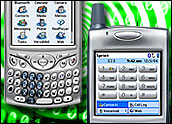
Yahoo on Monday began integrating its popular Web-based e-mail service with its instant messaging platform, a process that will take several months to complete.
In doing so, Yahoo is hardly breaking ground. More than a year ago, Google unveiled Google Talk, an application that allows Gmail users to simultaneously chat with, and telephone, other Gmail users. Microsoft’s Windows Live Messenger service is similarly merged with MSN Hotmail.
In announcing the integration, Yahoo Mail Vice President John Kremer said the company’s goal is to allow people to communicate as seamlessly as possible.
“Yahoo is focused on making it easier for people to connect to those who matter most to them,” Kremer said. “By bringing Yahoo’s leading instant messaging capabilities to e-mail users, we’re transforming Yahoo Mail into a tool that’s about communicating; regardless of the form that communication takes.”
Coming Together Too Slowly
However, that desire to foster communication doesn’t seem to apply to people who use Google Talk or AOL Instant Messaging.
While Yahoo users can chat with Windows Live Messenger subscribers, there remains a wall between Yahoo and other IM platforms, noted Peter Saint-Andre, executive director of XMPP Standards Foundation, a group working to develop and promote Jabber open messaging technology that would eliminate the “silos” of incompatible platforms.
“It’s like we’re still back in 1992, where I had my Compuserve e-mail and you had your Prodigy,” Saint-Andre told TechNewsWorld. “There isn’t a real federation of those in the instant messaging community like there is with e-mail. We’re still not to that point in the IM world.”
Can We Talk?
As is the case with the Windows Live Messenger/MSN Hotmail system and the Gmail/Google Talk system, the Yahoo platform will allow Yahoo Mail users to see which of the Yahoo users are online and available for instant messaging.
“People can choose to let others know if they are online and available to exchange messages in real time, and users will be able to see the online status of everyone in their contact list as well,” explained Yahoo. “Each instant messaging dialog will take place in a new conversation tab within Yahoo Mail beta, allowing people to chat with multiple friends simultaneously, without leaving the e-mail experience. Users can also convert e-mails seamlessly into IMs when friends come online (or vice-versa).”
Yahoo referred to the new Yahoo Mail system as “a true Web 2.0 experience” and said it comes with a faster and easier-to-use interface. “In addition to instant messaging, the Yahoo Mail beta also features enhanced functionality such as drag and drop e-mail organization, message preview, an integrated calendar and an RSS reader,” said the company.
Since it is Web-based, it can be accessed by any computer and no software downloading is necessary.
“Instant messaging is rapidly creeping up on the phone as an important way of real-time contact as more and more people have PCs and also mobile devices,” messaging expert Art Rosenberg told TechNewsWorld.
Good Old Ma Bell
However, Rosenberg lamented the barriers to true “unified communication” that exist when it comes to messaging. “IM is definitely one of the new modalities that is going to be very important for real-time contact,” he said. “What that means is it has to follow in the footsteps of the telephone with the old PSTN (public switched telephone network) concept, which means you can call anybody, not just somebody using the same service as you.”
Yahoo’s action “is nothing new” and is in response to “an overall trend moving away from e-mail toward instant messaging that is definitely true among the younger demographic,” John Barrett, who studies digital communication trends as director of research for Parks Associates, told TechNewsWorld.
There might not be a compelling incentive for companies offering IM to make their systems interact with those of their competitors, since people tend to sequester their contacts into groups anyway, Barrett noted. He equated it to real life, where you might have one group of friends at the local pub and another at your work or school. You usually interact with these groups of people mainly when you are with them.
“It’s not the phone system,” stressed Barrett. “If I really want to get hold of somebody, I’ll use the real phone.”











































